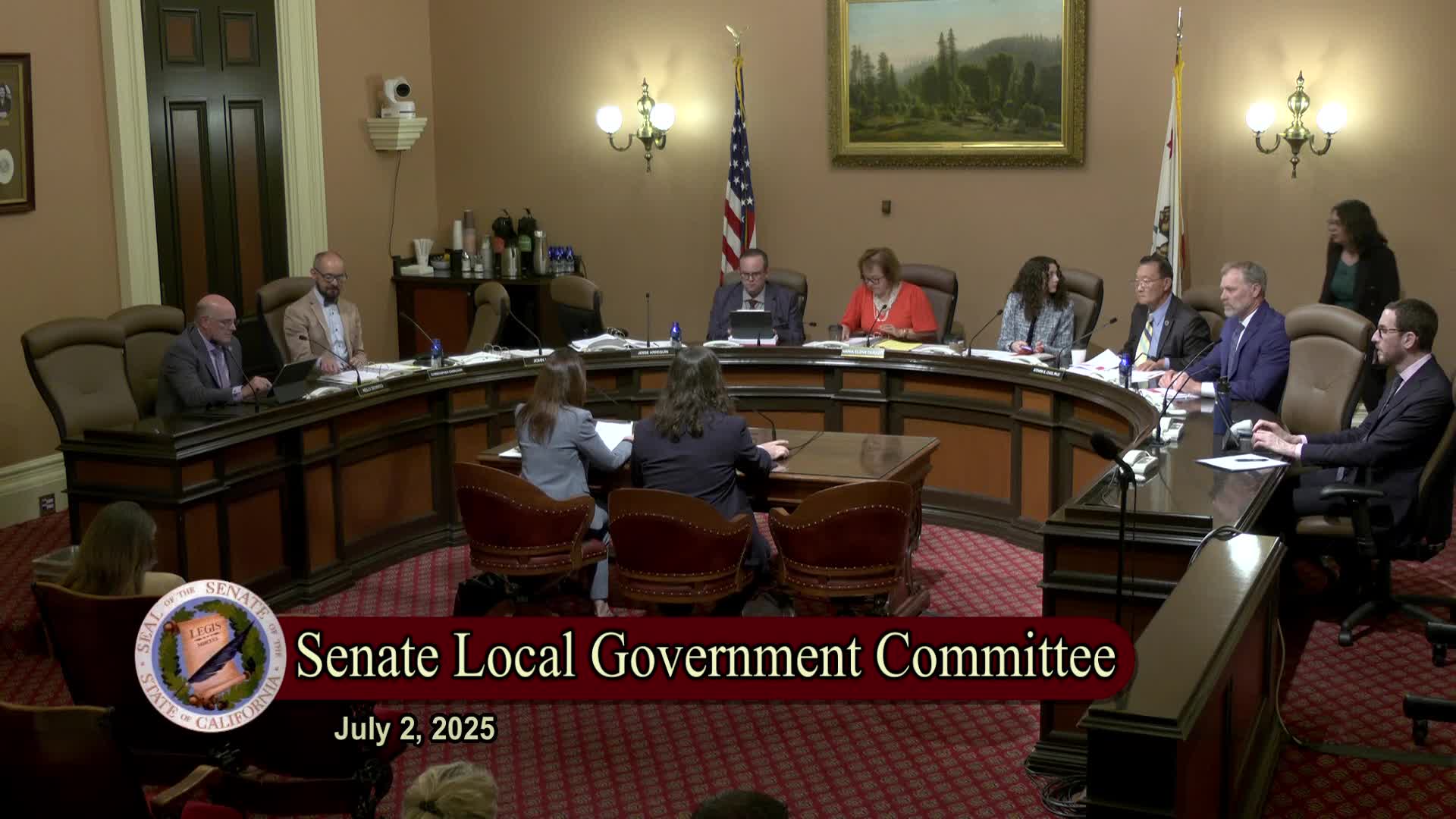Assemblywoman Carrillo advocates AB 699 to enhance voter transparency for tax measures
July 02, 2025 | California State Senate, Senate, Legislative, California
This article was created by AI summarizing key points discussed. AI makes mistakes, so for full details and context, please refer to the video of the full meeting. Please report any errors so we can fix them. Report an error »

The California State Senate's Local Government Committee convened on July 2, 2025, to discuss Assembly Bill 699, a proposed legislation aimed at enhancing voter transparency regarding local tax and bond measures. The bill seeks to address the current requirement that limits ballot labels to just 75 words, often resulting in confusing summaries that leave voters uncertain about the measures they are voting on.
Assemblymember Stephanie, the bill's author, emphasized that AB 699 would allow jurisdictions to direct voters to a voter information guide for a clearer explanation of key financial details. This includes information on the duration of measures and their funding purposes, while maintaining a simple ballot label. The assemblymember cited the failure of San Francisco's Proposition A in June 2022, which lost by just over 1% due to unclear ballot language, costing the city significant infrastructure investment.
Supporters of the bill, including representatives from the Nonprofit Housing Association of Northern California, argued that local housing bonds are crucial for affordable housing development. They highlighted the need for transparent information to help voters understand complex financial structures, which could lead to more equitable outcomes in funding.
However, the bill faced opposition from groups like the Howard Jarvis Taxpayers Association, which argued that the proposed changes could reduce transparency by relegating critical financial information to a separate guide. They suggested that increasing the word limit on ballot labels would be a more effective solution.
During the discussion, several senators expressed their support for the bill, noting that the current restrictions hinder local governments' ability to communicate essential information effectively. They argued that providing voters with more comprehensive details would lead to better-informed decisions.
In conclusion, AB 699 aims to reform the way local tax and bond measures are presented to voters, promoting transparency and informed decision-making. The committee's discussions highlighted the ongoing debate about balancing clarity and accessibility in voter information, with further deliberations expected as the bill progresses through the legislative process.
Assemblymember Stephanie, the bill's author, emphasized that AB 699 would allow jurisdictions to direct voters to a voter information guide for a clearer explanation of key financial details. This includes information on the duration of measures and their funding purposes, while maintaining a simple ballot label. The assemblymember cited the failure of San Francisco's Proposition A in June 2022, which lost by just over 1% due to unclear ballot language, costing the city significant infrastructure investment.
Supporters of the bill, including representatives from the Nonprofit Housing Association of Northern California, argued that local housing bonds are crucial for affordable housing development. They highlighted the need for transparent information to help voters understand complex financial structures, which could lead to more equitable outcomes in funding.
However, the bill faced opposition from groups like the Howard Jarvis Taxpayers Association, which argued that the proposed changes could reduce transparency by relegating critical financial information to a separate guide. They suggested that increasing the word limit on ballot labels would be a more effective solution.
During the discussion, several senators expressed their support for the bill, noting that the current restrictions hinder local governments' ability to communicate essential information effectively. They argued that providing voters with more comprehensive details would lead to better-informed decisions.
In conclusion, AB 699 aims to reform the way local tax and bond measures are presented to voters, promoting transparency and informed decision-making. The committee's discussions highlighted the ongoing debate about balancing clarity and accessibility in voter information, with further deliberations expected as the bill progresses through the legislative process.
View full meeting
This article is based on a recent meeting—watch the full video and explore the complete transcript for deeper insights into the discussion.
View full meeting
